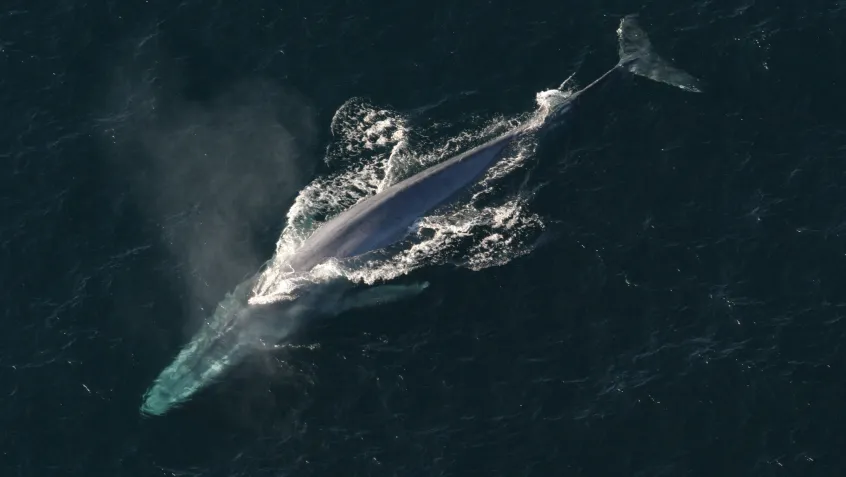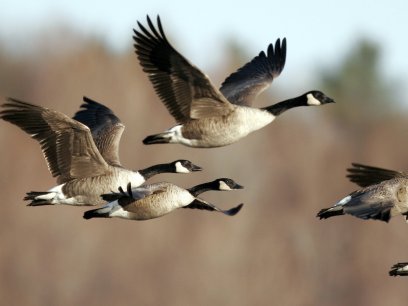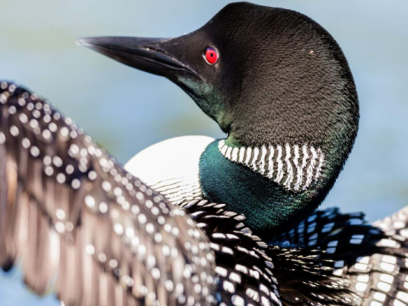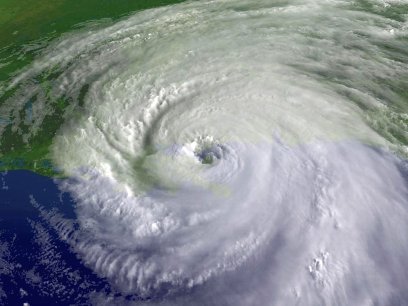
Imagine an animal about the size of three school buses parked end-to-end, with a weight roughly equivalent to 40 elephants, migrating south for the winter. This animal is the largest ever known to have lived on this planet—you would think that you would notice when it came through! However, despite their massive size and weight, blue whales and their travel patterns remain largely a mystery to scientists all over the world.
Much like some of their smaller counterparts in the animal kingdom, blue whales migrate seasonally in search of food and possibly calving and nursing areas. They are found in all of the world's oceans, and are thought to travel towards the poles in the spring to take advantage of the high zooplankton production that occurs there in the summer (blue whales feed predominantly on krill, a type of zooplankton), and then back towards the equator in the early winter. While the search for breeding grounds is a common impetus for migration in many other animal species, scientists do not yet know when or where blue whales mate. Many females give birth in the warm waters of the southernmost leg of their journey, but research has not yet delivered a clear picture of the larger trends in blue whale reproduction.
What information we do know about blue whales' traveling habits does not apply to these animals world-over—while some populations only travel short distances to feed and reproduce, other blue whales will make annual trips from polar waters to equatorial waters. Without more information about where and when these whales are traveling, it can be difficult to keep these populations safe. Ship strikes can kill and seriously injure blue whales—three of these whales were killed by ship strike near the Santa Barbara Channel off the coast of Southern California in 2007, a stark increase in mortality for animals with a typical life expectancy of 80 to 90 years in the wild.
You can help scientists learn more about these mysterious giants while aiding in reducing the number of ship strikes whales experience by taking part in Whale Alert, a network of non-profit organizations, government agencies, and shipping and tech companies focused on reducing whale strikes. By using their free app you can report whale sightings, helping vessels in the area avoid these animals. If you are boating in areas where these whales are known to swim, you can use the app to learn more about what kinds of mandated protections apply to where you are in the water.
Want to know where to spot these whales? On the East Coast, blue whales are most commonly seen off the coast of eastern Canada, more specifically in the Gulf of St. Lawrence during the summer and fall feeding seasons. In the winter, this population group may be seen in the waters off of Cape Cod, Massachusetts, and on rare occasions another population group may possibly be seen in the Gulf of Mexico and the Caribbean. On the West Coast, the Eastern North Pacific stock of blue whales is thought to winter I the waters off of Mexico and Central America, and feed during the summer in the waters off of the coast of the western United States. Other Pacific blue whale populations may be seen off of the Aleutians and in the Gulf of Alaska in the summer, and possibly Hawaii in the winter.
For more specific guidance on where and how to whale-watch off the West Coast, check out this resource from Whale Watch.
Sources:
National Geographic. 2016. "Kingdom of the Blue Whale." Accessed November 28. http://channel.nationalgeographic.com/channel/content/kingdom-of-the-blue-whale-3302/blue-whale-facts/#/compare/weight
http://animals.nationalgeographic.com/animals/mammals/blue-whale/
http://www.fisheries.noaa.gov/pr/species/mammals/whales/blue-whale.html


